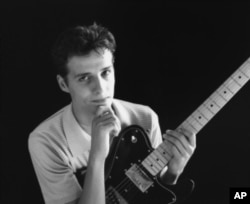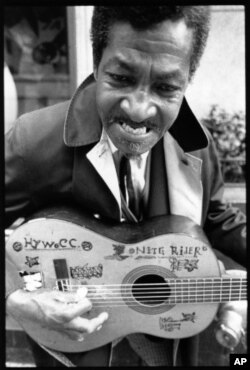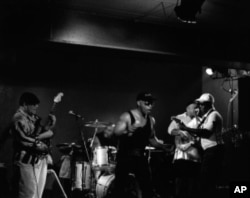During the 1970s, Washington, D.C. was home to a select group of musicians who created their own unique style of rhythm and blues. While most did not gain national attention, they were hugely popular - and still are - among Washington area audiences. Now an exhibit in the nation’s capital celebrates these local artists with intimate - and rarely seen - photographs.
Mention the name Chuck Brown and music fans quickly identify him as the undisputed creator of go-go, a form of African-American music that developed in Washington D.C. It's part jazz, part rhythm & blues and hip hop - and features strong percussion.
Go-go became popular in the 1970s, with its signature call-and-response, and is still going strong.
"Back in the day of top 40, we used to stop sometimes after we would do a song, but I got an idea of not stopping," Brown remembers. "Just keep going, coming out of one song and going to another."
That's how the term go-go was coined. Now Brown and about 30 local R&B musicians are being featured in a new exhibit.
"This exhibit, "Bustin’ Loose," is a tribute to Washington D.C. and the area’s rhythm and blues tradition, and soul," says Chris Murray, owner of Govinda Gallery where the photos are on display. "Washington has an extraordinary legacy, a musical legacy, that we’re honoring here today with Fernando Sandoval’s photographs."
Blues legend Bobby Parker - who inspired musical giants like the Beatles - is featured in the exhibit. So is Chester Chandler, more commonly known as Memphis Gold, who says music is in his blood. He, too, has shared the stage with musical celebrities, including soul legend James Brown.
"I feel like I’m in heaven. I do. I feel that I’m telling a story with the songs that I sing," he says. "I’m sending something to our young kids to take with them when I’m gone."
Fernando Sandoval is the man behind the camera. He took the pictures while developing personal relationships with R&B musicians like Black Magic and Mr. Lee.
"I guess unconsciously I was collecting this work to bring it finally to a gallery like this so they could get the recognition they deserve and are looking for," says Sandoval.
Fellow R&B singer, Selena McDay, was among the fans who came to provide that recognition. "I’m so glad Fernando did this because I’ve worked with almost all of these people. Bobby Parker and I have shared the stage with Chuck Brown."
Others are happy for a behind-the-scenes glimpse.
"A lot of these people you never see the face," says Joe Filosa, an art collector. "You always listen to the music, so it’s great to put the face with the music, which is great."
Local resident Bill Adair says he loves seeing photos of Chuck Brown in the exhibit because "he’s a Washington staple."
"I think it’s a wonderful exhibit. I think it’s a fabulous collection of Washington area blues musicians," says Bill Wax, a program director at SiriusXM Satellite Radio, who believes the exhibit is important for two reasons. "First of all, it’s important because blues is important. It is the mother tongue of almost all American music. Number two, blues is a really unique music in that it’s not made up of big stars. Blues survives - and has survived for almost a 100 years - because ordinary people, not big stars, have loved the music, learned to play it and committed their lives to it."
Gallery owner Murray is thrilled to present these artists to an international audience. "The world loves blues music, the world loves soul music. One of America’s greatest exports is its music. It’s a common language we all have, music."
And as long as audiences show up to listen, musicians like go-go star Chuck Brown are willing to show up and perform.













